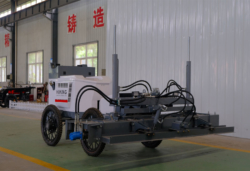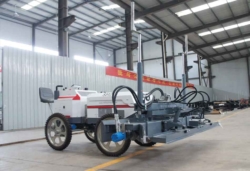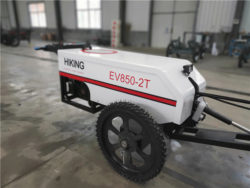Hauling in construction refers to the transportation of materials, equipment, or debris to and from a construction site. This critical process ensures that essential resources like gravel, sand, concrete, or heavy machinery are delivered efficiently, while waste materials such as dirt, rubble, or demolished structures are removed. Construction hauling services are vital for maintaining project timelines, improving site safety, and optimizing workflow. Whether it’s a small residential build or a large-scale commercial project, professional hauling ensures that materials are moved securely and on schedule, minimizing delays and costs.
Effective construction hauling requires specialized vehicles like dump trucks, flatbeds, or heavy-duty trailers, tailored to handle the weight and volume of materials. Companies offering hauling services in construction often prioritize eco-friendly practices, such as recycling debris or using fuel-efficient trucks, to reduce environmental impact. By understanding the role of hauling in construction, contractors can better plan logistics, streamline operations, and ensure compliance with local regulations, making it a cornerstone of successful construction projects.
Some common examples are loaders, cranes, and trucks. Loaders are tracked or wheeled machines that scoop up loose materials and transport them to another machine.
Material
Hauling materials and equipment from one place to another is essential in construction projects. Without this process, it would take a lot longer to complete the project. In addition, this process is expensive and can use up valuable manpower. Therefore, it is advisable to use hauling equipment instead of manpower for this purpose.
In general, there are two types of hauling equipment: bulk material trailers and dump trailers. Bulk material trailers are equipped with thread grips or metal slats on the flooring of the trailer that can be moved independently to sift the load and then slowly dump it. This type of trailer is ideal for hauling agricultural, waste, or recyclable materials.
Dumping trailers have hydraulically controlled slats on the floor that move side to side and up and down, allowing them to quickly remove large amounts of materials from a trailer without any manual intervention. This type of trailer is suitable for hauling aggregate materials, such as gravel or dirt. It also works well for hauling old appliances or other debris.
Construction materials are typically classified as bulk, standard off-the-shelf, or fabricated members and units. The processes for delivery, field storage, and installation will vary for each class of material. For example, bulk materials for excavation may be measured in terms of bank (solid in situ) volume, whereas standard off-the-shelf materials may be measured in cubic yards (dry volume).
Computer-based simulation tools can be used to model resource processes, the representation of spatial constraints, and the movement of resources. These tools can be useful but are labor-intensive and have a high learning curve. However, they can be used to estimate the feasibility of a given approach or technology.
Construction sites often have a lot of debris that needs to be removed. This can include old appliances, wood, bricks, and other materials that aren’t needed for the project anymore. This is why it’s important to hire a construction hauling company. The company will be able to get the debris out of your way so that you can start working on the project.
Equipment
Construction projects require a wide range of equipment. Some of this equipment can be large and heavy, making it difficult to transport from one place to another. That is why hauling companies are so important. They specialize in transporting equipment, supplies, and debris. They also have the necessary knowledge to safely and efficiently load and unload their trucks. This is especially important for oversized hauls requiring incredible attention to detail.
A mass haul diagram is one of the most important tools for estimating the amount of material that needs to be moved during a construction project. It can be used to determine if there is a deficit or excess of materials at various points in the construction process. It is a useful tool for project managers and can help them make decisions about how much to budget for a specific phase of the construction.
A mass haul diagram is a simple graph that shows how much material is being moved at various stages of the project. It consists of a grid with an x-axis and a y-axis, and it graphs sample lines and alignments. A line on the y-axis will represent the overhaul and free haul volumes for both fill and cut conditions, while the x-axis will mark the position of the balance point. If the line rises, a cut region is indicated, while if it drops, a fill region is indicated.
In order to ensure that a construction project is completed on time and within budget, it’s important to have the proper equipment. This includes equipment that is needed for excavation and construction, as well as transportation equipment. Haul dump trucks are a critical piece of construction equipment, as they eliminate the need for manual labor and allow workers to work more effectively. In addition, they reduce the risk of injury by minimizing physical strain on workers.
Haul trucking is the perfect solution for large-scale projects that involve dirt, rock, and aggregates. It’s fast, efficient, and a great option for companies that need to get these materials to their sites quickly and on demand. JFW Trucking is a reliable hauler that provides on-demand aggregate hauling for the construction industry. We can help you save money and time by avoiding city traffic, and we only haul these types of materials locally.
Debris
Whether you’re working on construction, demolition, or renovation projects, debris is going to pile up quickly. That’s why it’s important to have a plan for handling and disposing of the materials that you create. Ideally, the debris can be recycled and used in future projects. This reduces the time and money you’ll spend on onsite waste removal. It’s also good for the environment.
Managing and disposing of construction trash is a significant and time-consuming task. Many contractors handle it with a mix of standard equipment and manual labor. This slows productivity and increases labor costs, so it’s a good idea to look into the benefits of utilizing a professional debris-hauling company for your project.
Construction projects produce a lot of debris, but it’s not all the same kind of material. Some types of debris are more hazardous than others. For example, broken slabs of concrete and materials with fiberglass and lead-based paints present a serious health risk for those who are cleaning up the waste.
While the bulk of construction debris is reusable or recyclable, some of it ends up in landfills. This is why it’s important to make sure that the debris that you create is handled in accordance with your local laws. Thankfully, plenty of resources online can help you navigate the complex process.
Another great way to reduce the number of debris you generate is by separating the materials you work with throughout your day. This can be as simple as putting different materials into separate piles, such as scrap metal or concrete, to save you the trouble of sorting through a mixed pile at the end of the workday.
For large projects that require excavation, dump truck hauling can be useful. This type of transport can be a lifesaver for construction companies that need to move heavy materials that are too large or difficult to transport by hand. You can use a service such as Transportify, an app-based truck booking service, to book your transport needs and get the best prices on delivery rates.
Trucks
Trucking companies play a critical role in construction and are responsible for hauling materials between job sites. They help contractors avoid having to make numerous trips with their own equipment, reducing the risk of damage and increasing productivity on the site. Trucking companies also offer tracking services, which help clients know when their freight has arrived at the construction site.
There are many types of construction vehicles that aid in various aspects of the construction process. These include dump trucks, trailer trucks, and cranes. These machines can perform a variety of tasks, from digging trenches to transporting construction materials like aggregate or stone. They’re also useful for moving large, heavy machinery and equipment that would be impossible to move otherwise.
In construction, mass haul movement refers to the transportation of excavated materials to another location for use, disposal, or treatment. This calculation consists of several factors, including the volume of material moved and the distance of the haul. It’s important to understand how to read a mass haul diagram, which features sample lines and alignments. It’s also common to see grade points, overhaul and free haul regions, and balance lines on these diagrams.
Dump trucks are a vital piece of equipment for construction workers, as they can reduce the amount of manual labor needed to transport large amounts of material or equipment. These vehicles are able to accommodate massive loads and have safety features that help keep the crew safe. Additionally, they’re capable of maneuvering on rough terrain, which can be a challenge for other vehicle types.
Another type of construction vehicle is the loader. These machines are designed to transport loose material, such as sand or gravel, to other construction equipment for processing. They’re also useful for loading and unloading materials on job sites. Loaders are able to work in most weather conditions, and they’re often used on mining projects to transport loose materials over long distances.
Efficient material transportation can have significant benefits for a construction project’s timeline, budget, and overall success. For example, by reducing the number of trips required to transport materials, contractors can minimize expenses, such as fuel and maintenance costs. In addition, using fewer resources also contributes to a more environmentally friendly project.







